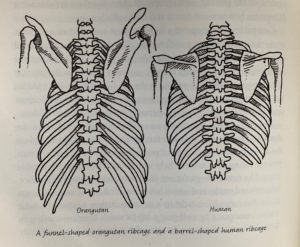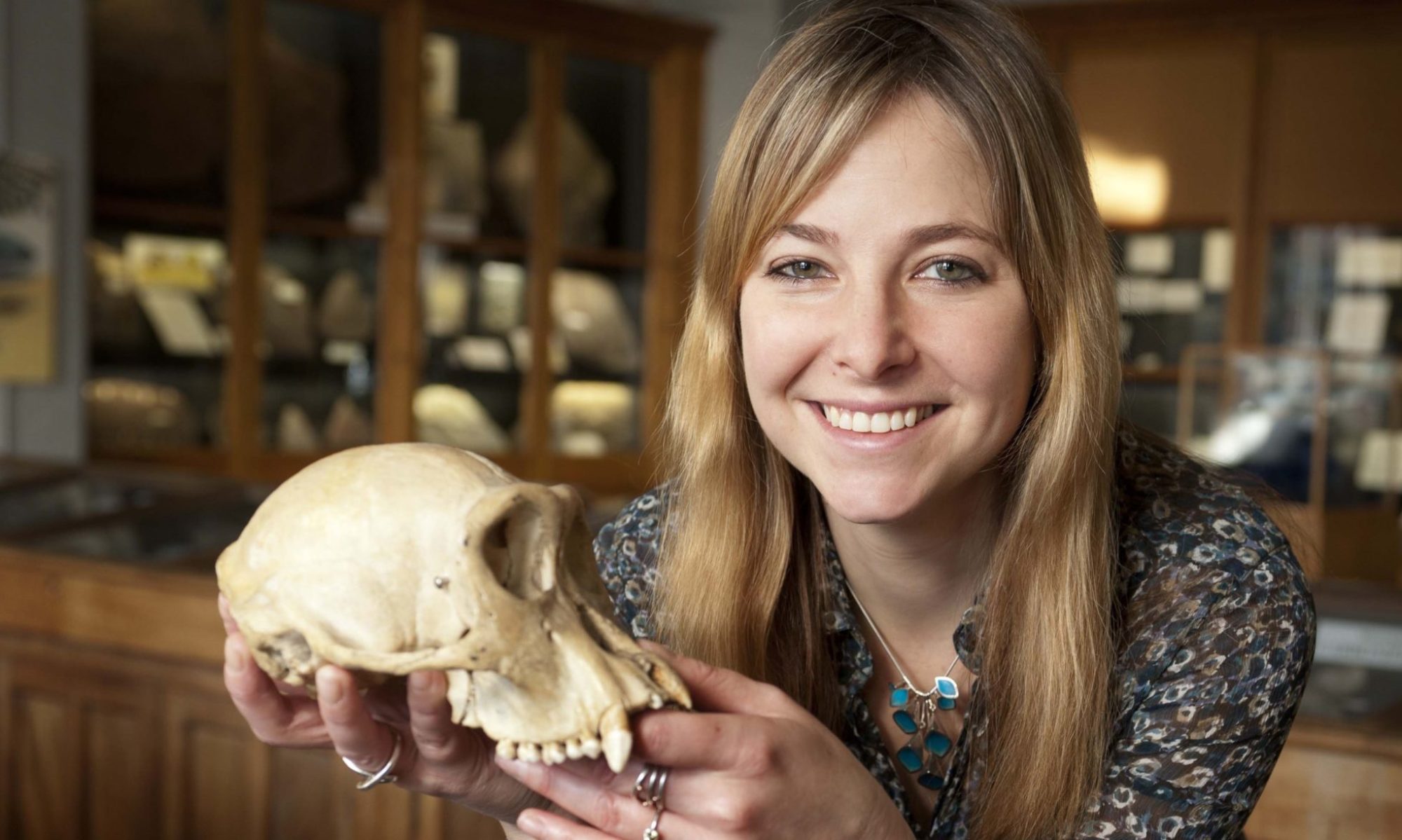Chapter Overview:
In this chapter, the shape of the chest and its contents are discussed from an evolutionary point of view, drawing on evidence from our ancestors and relatives to show how the anatomy of the chest may have arisen.
Chapter Summary:
This chapter begins with a description of the muscles and bones of the chest. The function of the intercostal muscles is to resist changing shape when we breathe in. The diaphragm and intercostal muscles oppose to create a negative pressure to suck air into the lungs so that we may breathe.

Humans and closely related apes have a very special shape to our thoracic cavity. Our shoulders are laterally displaced, and our chests are flattened on the anterior-posterior axis. This allows us to swing our arms for an easier and more energy efficient gait. The attachment of abdominal rectus muscles allows us to move our trunk with considerable strength. This also affects the shape of the ribcage. Because of the advantages associated with barrel chested anatomy for walking bipedally, we may be able to look back in the past to see where obligate bipedalism became the only way to locomote for our ancestors.
The history of our chest shape is complicated. Australopithecus sediba specimens show more shrugged shoulders and apelike posture than Australopithecus afarensis which was an earlier specimen. Roberts cautions against thinking of evolution as a linear process that inevitably resulted in our current morphology. Instead, these are more hints about the ways our ancestors lived than about how or why we developed the chest we did. It may be that we have a chest more similar to our ancestors while other primate species are the ones who have changed.
Our chest shape is distinct from that of Neanderthals which allows us to see some of the distinctions between us and Neanderthals. Perhaps the larger thoracic volume of Neanderthals could show that they had larger lungs than modern humans do, possibly as an adaptation to altitude. Neanderthals had a more traditional robust body shape than Homo sapiens. In fact, it was H. sapiens that changed from the original morphology. Neanderthals were well suited for cold climates, but we are not sure that their morphology arose in response to cold climates.
Our heart is much the same as that of other mammals. We have a single loop circulation while we are fetuses but once we begin to breathe, we need a dual loop system which is why our hearts are split into the halves they are. Blood can flow from one side of the heart to the other in infants because blood mixing is unimportant, they do not absorb oxygen through their lungs. In adults this would lead to a very inefficient system of blood oxygenation. When this hole fails to close, it is usually corrected by a simple surgery.
Lungs develop much later than hearts during gestation because they are not needed until after gestation is complete. Problems with lung development arise when babies are born prematurely. This happens for two reasons. The alveoli are not yet mature and capable of gas exchange and surfactant in the lungs that allows for reduced surface tension is not produced yet. Without these two things ready, premature babies inevitably face problems with respiration.
The origin of a lung for breathing may lie in the swimming bladder in fish that allows them to float well. Lungfish are thought to be a good example of what the first air breathing animals looked like.
